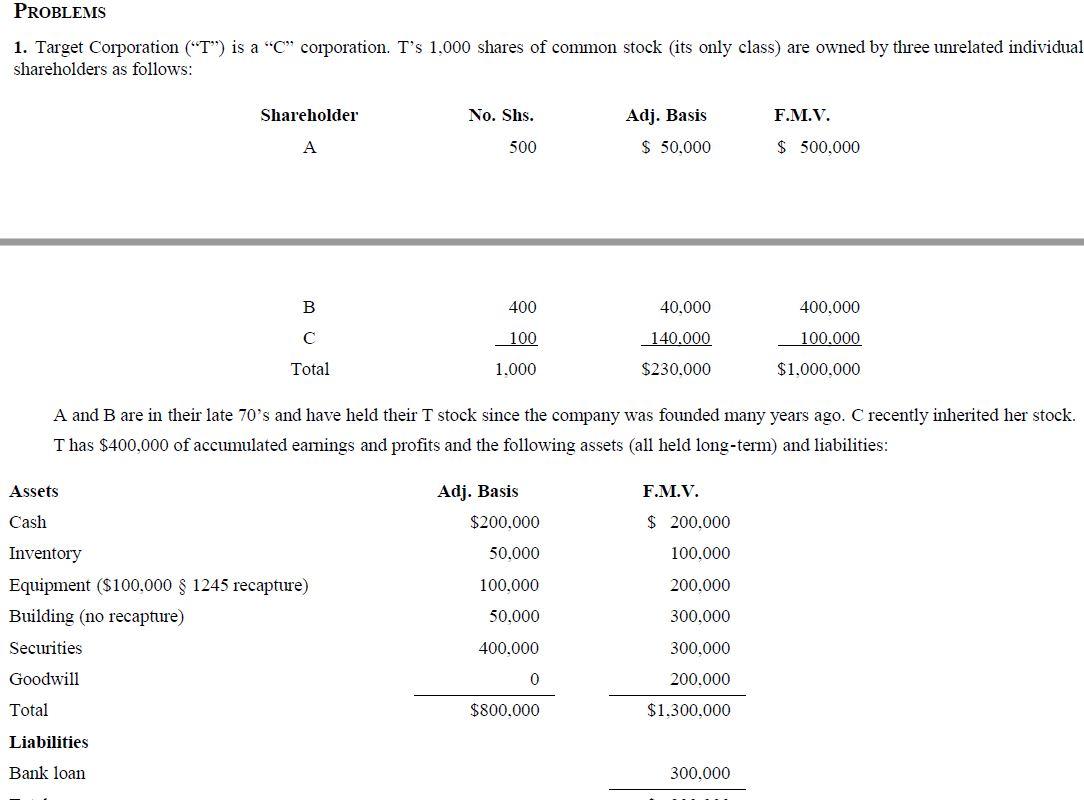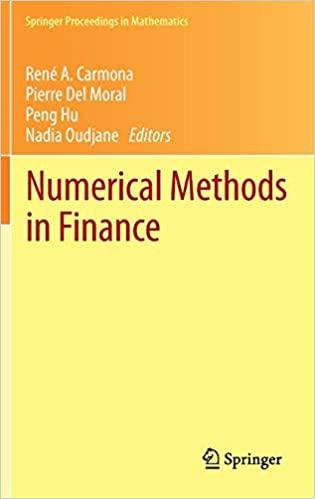

PROBLEMS 1. Target Corporation ("T") is a "C" corporation. T's 1,000 shares of common stock (its only class) are owned by three unrelated individual shareholders as follows: Shareholder No. Shs. Adj. Basis F.M.V. A 500 $ 50,000 $ 500.000 B 400 40.000 400,000 100 100.000 140.000 $230,000 Total 1,000 $1,000,000 A and B are in their late 70's and have held their T stock since the company was founded many years ago. C recently inherited her stock. T has $400,000 of accumulated earnings and profits and the following assets (all held long-term) and liabilities: Assets Adj. Basis F.M.V. Cash $200,000 $ 200.000 50.000 100.000 Inventory Equipment ($100,000 $ 1245 recapture) Building (no recapture) 100.000 200.000 50.000 300.000 Securities 400.000 300.000 Goodwill 0 200.000 Total $800.000 $1.300,000 Liabilities Bank loan 300.000 T and its shareholders are considering a sale of the business. Purchaser Corporation (P) is interested in acquiring T. If specific computations are required by your instructor, assume (for computational convenience) that C corporations are taxed on all their income at a flat corporate rate of 20 percent and individuals are taxed at a flat 40 percent rate on ordinary income and a 20 percent rate on long-term capital gains (and ignore the 3.8 percent tax on net investment income). What are the tax consequences of the following alternative acquisition methods to T, T's shareholders, and P? (a) T adopts a plan of complete liquidation, sells all of its assets (except the cash but subject to the bank loan) to P for $800,000 cash, and distributes the after-tax proceeds to its shareholders in proportion to their stock holdings. (b) T adopts a plan of complete liquidation, distributes all of its assets (subject to the liability) to its shareholders in proportion to their stock holdings, and the shareholders then sell the assets (less any cash but subject to the bank loan) to P for $800,000. (c) In general, how would the result in (a), above, change if P paid T $200,000 in cash and $600,000 in notes, with market rate interest payable annually and the entire principal payable in five years ? (d) Tsells all of its assets (except for the cash but subject to the bank loan) to P as in (a), above, except that I does not liquidate and instead invests the after-tax sales proceeds in a portfolio of publicly traded securities. (e) P purchases all the stock of T for $900 per share and makes a $ 338_election. (Why didn't P pay $1,000 per share for the T stock?) (f) P purchases all the stock of T for cash but does not make the $ 338 election. (Consider generally what P should pay for the T stock.) (g) Assuming P and I are indifferent to the form of the transaction except for the impact of taxes, would you recommend the acquisition method in (a) (purchase of assets), (e) (purchase of stock with $ 338 election) or (f) (purchase of stock without $ 338 election), above? (h) Would your recommendation in (g), above, change if T had $600,000 in fully deductible net operating loss carryovers? (i) Assume that I is a wholly-owned subsidiary of S, Inc., and S has a $200,000 adjusted basis in its T stock. What result if I distributes all of its assets (subject to the liability) to S in complete liquidation, and S then sells the assets to P? (1) Same as (i), above, except P insists that the transaction must be structured as an acquisition of T stock








